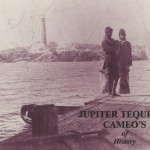Stuart Florida Area History & Culture
 The history of the Stuart Florida area includes Indian tribes, rum runners and farmers—all drawn to the area by its unparalleled beauty and abundances. The Treasure Coast area that became Stuart and Palm city has been a prosperous, thriving river port since the late 18th century.
The history of the Stuart Florida area includes Indian tribes, rum runners and farmers—all drawn to the area by its unparalleled beauty and abundances. The Treasure Coast area that became Stuart and Palm city has been a prosperous, thriving river port since the late 18th century.
Stuart was first settled by non-Native Americans in 1870. In 1875, a United States Lifesaving Station was established on Hutchinson Island, near Palm City. Today, the station is known as Gilbert’s Bar House of Refuge and is on the National Register of Historic Places.
From 1893-1895, the area was called Potsdam. This name was chosen by Otto Stypmann, a local landowner and Pineapple grower who was originally from Potsdam, Germany. Potsdam was renamed Stuart in 1895, after the establishment of the Florida East Coast Railway, in honor of Homer Hine Stuart, Jr., another local landowner.
When Stuart was incorporated as a town in 1914, it was officially located in Palm Beach County, as Martin County had not yet be established . In 1925, Stuart was chartered as a city and named the county seat of the newly created Martin County.
When the Florida “boom” turned into a “bust”, the Palm City area, which had survived the 1928 hurricane, was hard hit financially. In 1937 the town was abolished by the Legislature because it was insolvent. It took until 1963 for a special taxing district to pay off the town’s debts.
The Palm City Area Revived.
In 1983, after years of vigorous debate and many alterations and concessions, the Martin County Commission in a 3-2 vote approved the plan for Martin Downs. The proposal covering 2,418 aces was to have 5,000 homes, country clubs, shops, churches and other infrastructure, and be home to about 14,000 people.
Time passed, land development grew, and the Palm City area prospered. Sometime prior to 1988, Peter Cummings filed for Permits and for a Planned Urban Development agreement for the land, in Martin County, of which The Meadows at Martin Downs was to become a part. The entire tract was largely a swampy area used to graze cattle. Monterey Road was a lightly traveled two lane roadway. Today’s Pine Ridge, Charter Club, Monarch Country Club and the other communities in Martin Downs were only plans in the minds of the developers.
Burg & Divosta signed an agreement with the developer to build and develop a section of the land then known as Martin Downs, which was to become The Meadows at Martin Downs. Cummings signed with other builders to develop parcels which would become Charter Club, Pine Ridge, La Mariposa, West Villages, and Sunset Trace.
He also was the moving force that brought to the area such facilities as the Martin County Marina and Sand Hill Cove. A smart developer, he kept for his own development company all the commercial areas which later became The Villages Shoppes, The Village Center, Publix supermarket, McDonald’s, and the bank properties, along with some industrial property west of the West Villages.
Divosta started construction on the site known as The Meadows at Martin Downs in 1988 by building two structures from which to sell. One was a Single Family home (Hampton) in what is now known as Greenwich Village, and the other was a four unit Town Home building (Stamford) in what is now known as Lakemont Village. Both types of homes were started in The Meadows at about the same time.
In 1989 a Single Family Home area , now part of Brighton Village, was started with the Hampton model.
In 1991 a Multiple Family area, now known as Ridgewood Village, was started with the first Sun Terrace building, a four unit Patio Home. Also built here was the first section of Capri homes, a two family patio home
In 1990 another Single Family Home area, Mayflower Village, was started, offering the Bedford model.
In 1992 a new Single Family Home model known as a Carmel was added to the nearly built Mayflower Village. Only thirteen (13) of these homes were built.
In 1992 a second section of Capri homes was built in Ridgewood Village.
In 1993-1994, Foxboro Village was constructed with Capri Homes.
In July of 1993 Divosta, who until then ran the Homeowners Association, turned over control of the Homeowners Association to the homeowners’ elected Board of Directors which then took over the management and maintenance of the 6 Meadows villages.
Today, the Sensus Bureau estimates the Martin Downs community has over 23,000 full-time residents and many more seasonal visitors.
The Census Bureau also reports that the median per household income in Palm City is $88,412 while the median for the state is $53,425.
With access from Florida’s Turnpike and Interstate 95, Palm City is the gateway to Martin County, providing a microcosm of the county with its nurseries, flower farms, pasture and grove lands, industrial parks, golf courses, marinas and trim shopping areas. The Palm City area has truly prospered.

